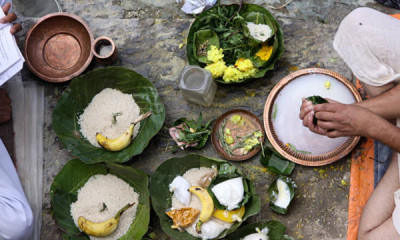What Is Kaaj In Assamese Culture After Death?



The word Kaaj literally means “work” or “ceremony”, but in this context, it refers to the final funeral rites performed to honor the deceased.
It is often compared to the Hindu Shraddha ceremony, symbolizing the completion of the soul’s journey and the family’s release from mourning restrictions.
Kaaj is generally observed on the 11th, 13th, or sometimes the 17th day after death, depending on family custom and guidance from the priest.
The exact day may vary, but its essence lies in bringing spiritual closure.
Priest-led puja with mantras, offerings of rice, sesame seeds, flowers, and water.
Pinda daan (offering of food balls to ancestors) is often performed.
Community feast (paaka shaad) where relatives, neighbors, and villagers are invited to share food in memory of the deceased.
Distribution of clothes or essentials among the needy as a form of charity.
It is believed that the soul attains peace and unites with ancestors after Kaaj is performed.
The ceremony lifts mourning restrictions for the family, allowing them to resume normal life.
Kaaj also reinforces community bonding and ensures blessings for the living family members.
The Kaaj ritual in Assamese culture is one of the most significant post-death ceremonies, observed after the initial rites. It symbolizes final purification, remembrance, and spiritual closure for the departed soul. For Assamese families, Kaaj is not only a religious obligation but also a tradition that strengthens cultural identity and community harmony.